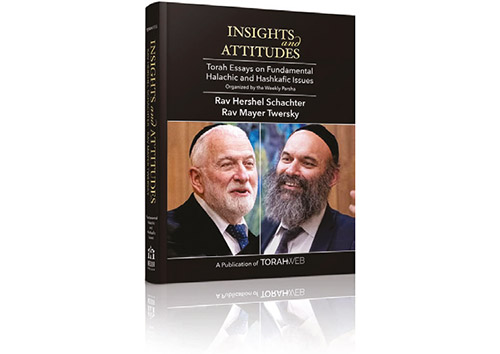
Editor’s note: This series is reprinted with permission from “Insights & Attitudes: Torah Essays on Fundamental Halachic and Hashkafic Issues,” a publication of TorahWeb.org. The book contains multiple articles, organized by parsha, by Rabbi Hershel Schachter and Rabbi Mayer Twersky.
Every Shabbos we read a haftara dealing with inyana deyoma (issues of the day). Once in a while, the inyana deyoma happens to be that there is a chasan (groom) in shul or that today is erev Rosh Chodesh. But usually we consider the parashas hashavua to be inyana deyoma, and there is always an obvious connection between the haftara and the parasha. In Parashas Beha’aloscha, both the Chumash and the Navi deal with the lighting of the menorah in the Beis HaMikdash. Very often, in addition to the obvious connection, there is a deeper connection which is not that obvious. (See also “Finding the Hidden Link,” above in this volume, Parashas Bamidbar, page 177.) The Rambam lists the thirteen principles of faith of the Jewish religion. Two of these ikkarei ha’emuna (principles of fath) are (1) that we believe in prophecy and (2) that we believe that Moshe Rabbeinu was the greatest prophet of all time.
Regarding the uniqueness of Moshe Rabbeinu’s nevua (prophecy), the Rambam (Moreh Nevuchim II:43) points to the haftara of Parashas Beha’aloscha wherein the navi Zecharia is shown a vision/prophecy which he could not understand. Zecharia then asked the malach (angel) who showed him the vision to explain what the olive trees in the vision are supposed to represent. The malach responded, “but you certainly know what they are all about,” whereupon Zecharia again requests of the angel to please explain because he does not understand! (Zecharia 4:4-5). Finally, the malach explains the vision to the navi Zecharia.
The Rambam quotes the Gemara (Yevamos 49b) saying that Moshe Rabbeinu’s level of prophecy was much greater than that of all the other nevi’im in several different ways. One of the differences is that the prophecies of Moshe Rabbeinu were much clearer than those of the other nevi’im. The Rambam quotes the passage from Zecharia to demonstrate the point that unlike Moshe, it took Zecharia a while, with quite a bit of give-and-take, to understand the prophecy.
Moshe Rabbeinu being the greatest navi is one of the major themes of Parashas Beha’aloscha. Moshe Rabbeinu’s own sister, Miriam, made negative comments about her brother, not realizing that his level of prophecy was way beyond hers or that of her other brother Aharon. Hashem punished Miriam for the negative comments that she made and formulated this ikkar in emuna, i.e., that all should realize that Moshe Rabbeinu was the adon hanevi’im (master of prophets). This is the additional connection between Parashas Beha’aloscha and its haftara – they both bring out this ikkar in emuna.
Rabbi Hershel Schachter joined the faculty of Yeshiva University’s Rabbi Isaac Elchanan Theological Seminary in 1967, at the age of 26, the youngest Rosh Yeshiva at RIETS. Since 1971, Rabbi Schachter has been Rosh Kollel in RIETS’ Marcos and Adina Katz Kollel (Institute for Advanced Research in Rabbinics) and also holds the institution’s Nathan and Vivian Fink Distinguished Professorial Chair in Talmud. In addition to his teaching duties, Rabbi Schachter lectures, writes, and serves as a world renowned decisor of Jewish Law.













